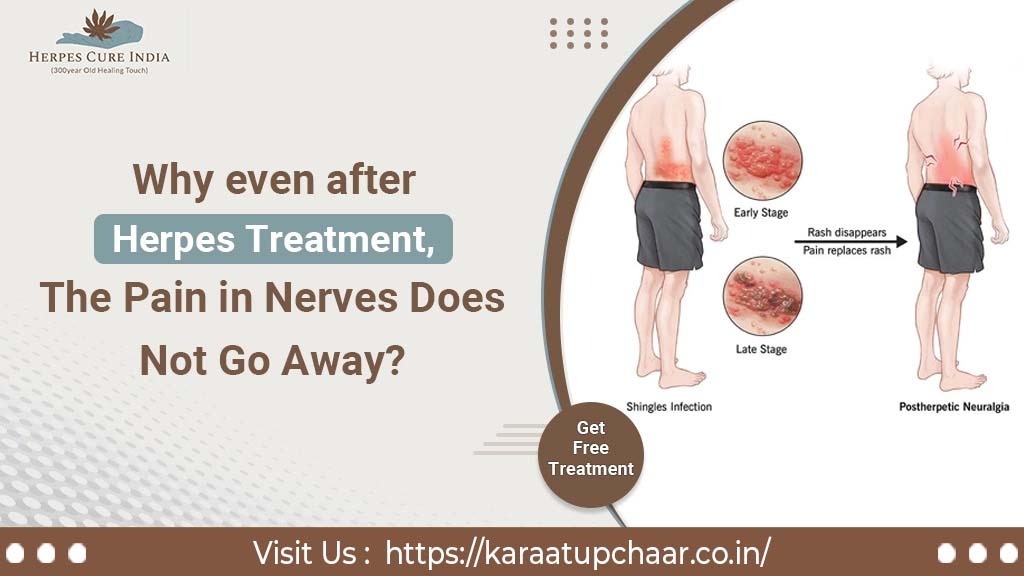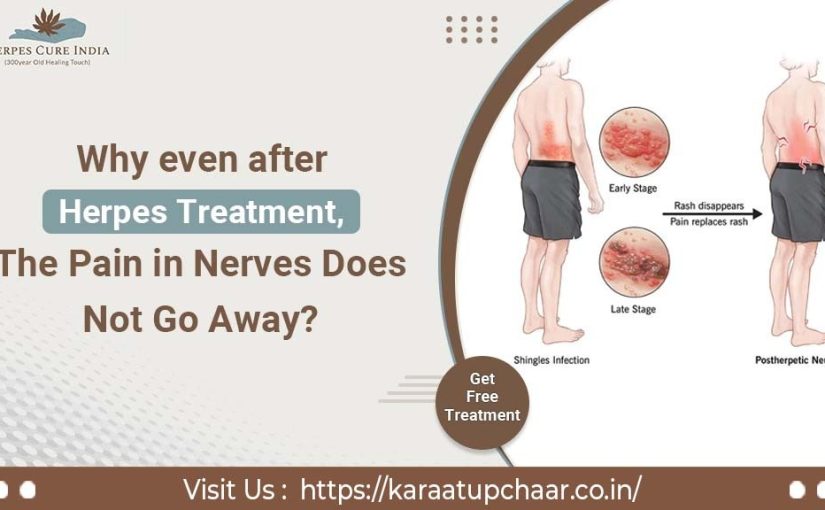
Post Herpes Neuralgia (PHN): Why even after Herpes treatment, the pain in Nerves does not go away?
Herpes Shingles, also known as herpes zoster, can occur at any age. Herpes zoster is an infection caused by the varicella-zoster virus, which reactivates after remaining dormant for a long time, usually following an earlier episode of chickenpox. The varicella-zoster virus typically reappears only once in a person’s life, with only 10% experiencing a recurrence. But what exactly is Post Herpes Neuralgia? In this blog, we discuss Post Herpes Neuralgia.
What is Post Herpes Neuralgia (PHN)?
Shingles is a disease that causes a painful rash with blisters and other symptoms. Usually, the rash appears in bands on one side of your body, often on your trunk (the central core of your body). Blisters form as a result of the rash. Even after the rash or blisters have healed, the pain may persist, a condition known as Post Herpes Neuralgia (PHN).
Post Herpes Neuralgia is the most common and feared complication following herpes zoster. Its definition varies, ranging from pain that persists after the rash has healed to pain that continues 35 days or 5 months after the onset of herpes zoster. Some physicians view herpes zoster-related pain as a continuous condition. Therefore, we recommend using pain duration and pain at specific time points (such as 3.5 months after treatment initiation) as outcomes in clinical studies. Scarring of the dorsal root ganglion and atrophy of the dorsal horn on the affected side are associated with Post Herpes Neuralgia, which develops due to the significant inflammation caused by herpes zoster. Pain and other unpleasant symptoms of Post Herpes Neuralgia, including allodynia (pain in response to generally innocuous stimuli) and hyperalgesia, are caused by these and other peripheral and central nervous system abnormalities.
What does Post Herpes Neuralgia (PHN) make you feel?
You will experience discomfort at the site of the shingles rash. The pain may be intermittent or continuous. Some describe the pain as burning, jabbing, or excruciating, while others (less frequently) report numbness or itching in the affected area. The urge to scratch the affected area can become overwhelming. Soft cotton clothing may help ease the pain by gently rubbing the area, but the satisfaction of scratching won’t entirely go away.
Why, even after Herpes treatment, does the pain in the nerves not go away?
When a person is infected with chickenpox during childhood, the virus may later resurface as Herpes Shingles. In most cases, the virus remains dormant for a long period, but certain conditions (such as depression, a weakened immune system, or old age) can reactivate the dormant virus, causing it to spread. According to research, there is no definitive cure for herpes simplex, but some treatments can ease the pain, whether through vaccines, medications, or Ayurvedic treatments. However, the pain often persists even after Post Herpes Neuralgia treatment due to several factors.
Age: The risk of developing Post Herpes Neuralgia increases with age. When you’re older and contract shingles, you’re more likely to develop PHN and experience more severe pain than if you were younger. Approximately 10 to 15% of shingles patients over the age of 50 will develop PHN, while it rarely affects those under 35. As a person ages, their ability to tolerate pain diminishes, making the pain last longer in older adults.
Weak Immune System: As you age, your immune system weakens, increasing the likelihood of the latent varicella-zoster virus reactivating and causing shingles. Medical conditions such as cancer, chronic infectious diseases (like HIV/AIDS), organ transplantation, and the use of immunosuppressant medications (such as chemotherapy, steroids, or anti-organ rejection medicines) can further weaken the immune system. A compromised immune system reduces the body’s ability to recover, causing the pain from Post Herpes Neuralgia to persist far longer than usual.
Intensity of Shingles: A severe rash increases the chances of developing Post Herpes Neuralgia. Before shingles develop, you may experience painful, itchy, or tingling sensations in the affected area. You are more likely to develop PHN if these symptoms appear in a skin area a few days before the shingles outbreak. When herpes sores appear on more sensitive parts of the body, such as the lips or genital regions, they cause significantly more pain than in less sensitive areas, leading to more severe and prolonged pain.
Delayed Treatment: The chance of developing PHN increases if you wait more than three days after your rash appears to consult a doctor, as this is the window during which antiviral medication is most effective.
Self-help to alleviate the discomfort and irritability of Post Herpetic Neuralgia:
- Cotton or silk clothing is less likely to irritate the skin than other fabrics.
- Use cling film or a plastic wound dressing to protect the injured area.
- Use cold packs, but never apply ice directly to the skin. Some people find that wrapping an ice pack in a towel and placing it on the affected area helps cool the skin.

